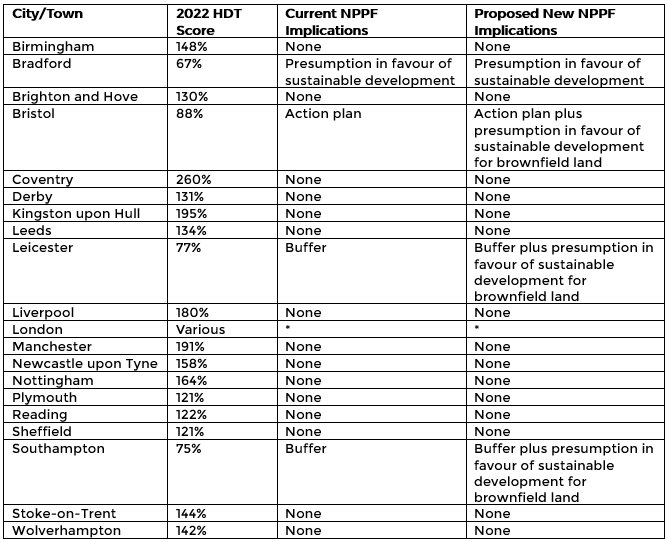Housing on Brownfield Land - Government Consultation
Housing on Brownfield Land - Government Consultation
To much press fanfare, the Government has today launched a consultation seeking views on its proposed approach to updating national planning policies related to development of brownfield land.
The accompanying press release says:
"As part of its long-term plan for housing, the government has announced today (13 February 2024) that every council in England will be told that they will need to prioritise brownfield developments and instructed to be less bureaucratic and more flexible in applying policies that halt housebuilding on brownfield land."
Stirring stuff! And clearly stick rather than carrot. But what's beneath the detail?
The consultation can be viewed via this link. Consultation responses are sought by 26th March 2024.
There are two proposals.
1. All Local Planning Authorities to give significant weight to the benefits of delivering as many homes as possible
First, the consultation proposes, "…a change to national planning policy that would expect local planning authorities to give significant weight to the benefits of delivering as many homes as possible, and to be flexible in applying policies or guidance on the internal layout of developments especially for proposals on brownfield land. This policy would apply to all authorities…"
Sounds good. But the National Planning Policy Framework (NPPF) of December 2023 (and previous incarnations) essentially already says this at paragraph 124c, viz: “substantial weight” is to be afforded to use of brownfield land for housing delivery. How is "significant weight to the benefits of delivering as many houses as possible" really any different?
The proposed need for authorities to be "flexible in applying policies or guidance on the internal layout of developments" is broadly to be welcomed, as is the counterpoint that "national policy would continue to expect that new development would provide acceptable living standards". This relates particularly to levels of internal daylight and sunlight within developments. My experience has been that published guidance on this matter is too often taken prescriptively and is overly restrictive on development. However, again, the NPPF effectively already says this at paragraph 129c.
Crucially, for me, the consultation also says, "This proposal does not remove legal requirements nor the importance of other considerations relating to beauty or undermine wider considerations of character as part of the plan-making process" [and presumably decision-taking as well]. This is where it gets really interesting. There is clearly a pro-brownfield (I daresay anti-greenfield) residential development push from Government, implying the need for high densities and tall buildings in urban areas - but how will this square with the requirement for "beauty" and the ongoing need to consider townscape and visual impacts and the settings of heritage assets? The policy provisions relating to those matters remain unchanged. These are just some of the challenges to brownfield development in urban areas.
2. The 20 towns and cities subject to the urban uplift are to have the tilted balance triggered for brownfield sites, where their Housing Delivery Test score falls to 95% or below
The second of the two proposed changes would involve, "the application of the presumption in favour of sustainable development in respect of previously developed land only for those 20 towns and cities subject to the urban uplift, where their Housing Delivery Test score falls to 95% or below."
The table below lists the 20 urban uplift authorities, along with their Housing Delivery Test scores for 2022 (which were published on 19 December 2023), the current consequences under the existing NPPF, and the consequences if the Government's new policy were to be brought in.

* I have not broken this down per London Borough for the purposes of brevity.
It can be seen that Bristol, Southampton and Leicester are clearly at risk of the brownfield land tilted balance being applied, but most of the urban authorities are delivering housing very well against their assessed needs.
Ian Roach MRTPI MIEMA CEnv
Director
Roach Planning and Environment Limited
13 February 2024
Tagline here
Add your title here
This is a paragraph. Writing in paragraphs lets visitors find what they are looking for quickly and easily. Make sure the title suits the content of this text.



